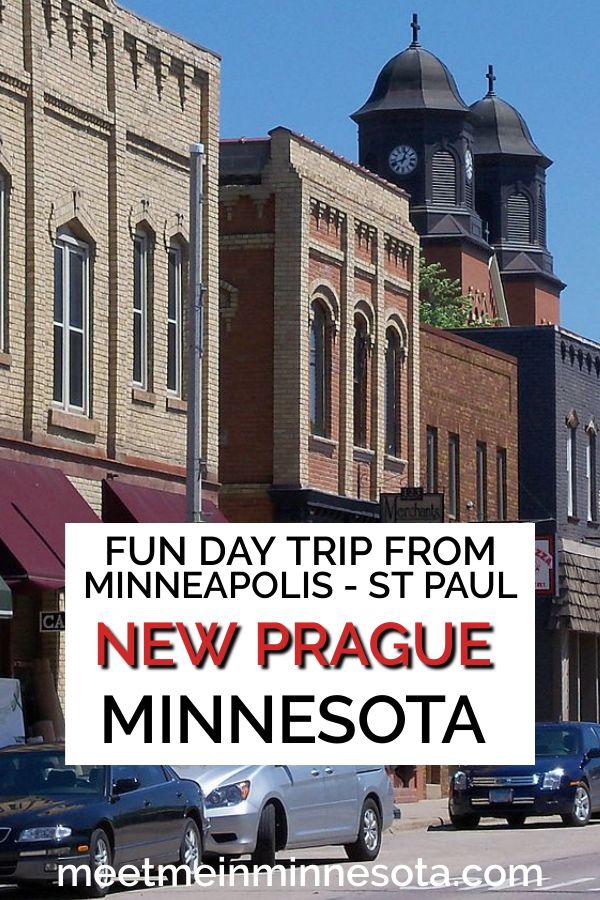Looking for interesting day trips from Minneapolis? Old world influences in New Prague, Minnesota with 19th-century charm make it a winner!
When our medical emergency in Colombia forced a return to the United States for health care followup, we began bunking with our kids at their farm in Helena Township, outside the city of New Prague, Minnesota.
Having been raised in a small town, I’ve long thought it would be fun to live in one again; the Universe responds to our desires in ways we don’t anticipate!
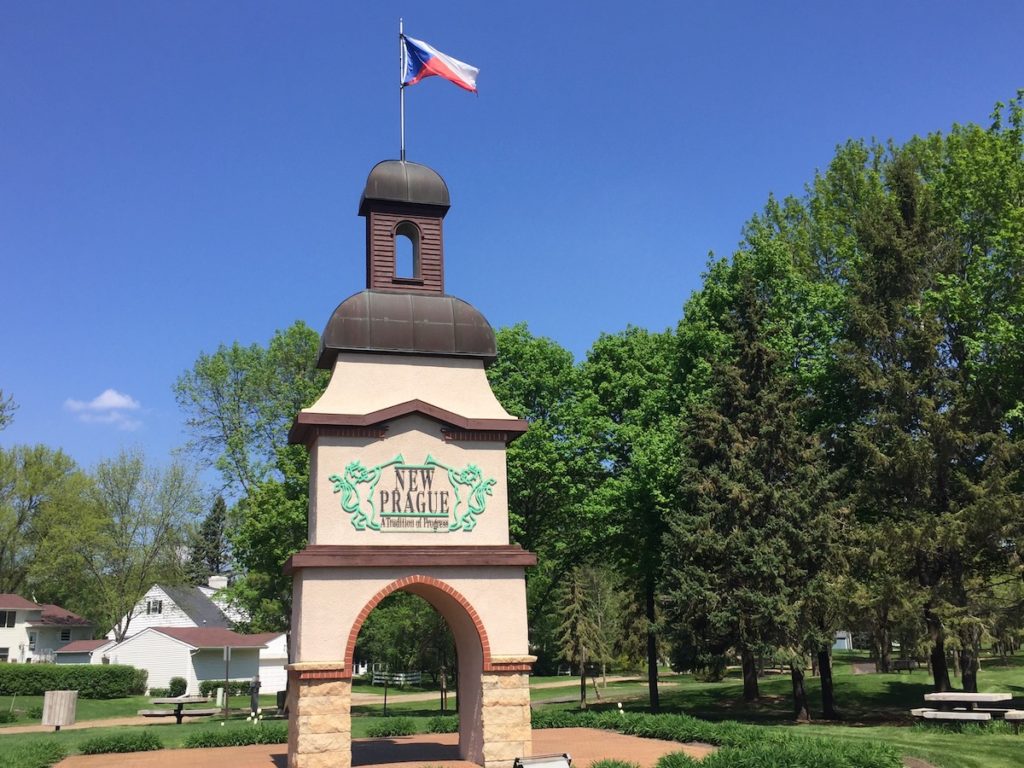
Life in New Prague has a distinct middle American veneer. It’s the kind of place where you jump in your son-in-law’s vehicle and the radio is pre-tuned to a country music station.
There are only a couple of stoplights in town and the flags come out on Main Street for Memorial Day and the 4th of July.
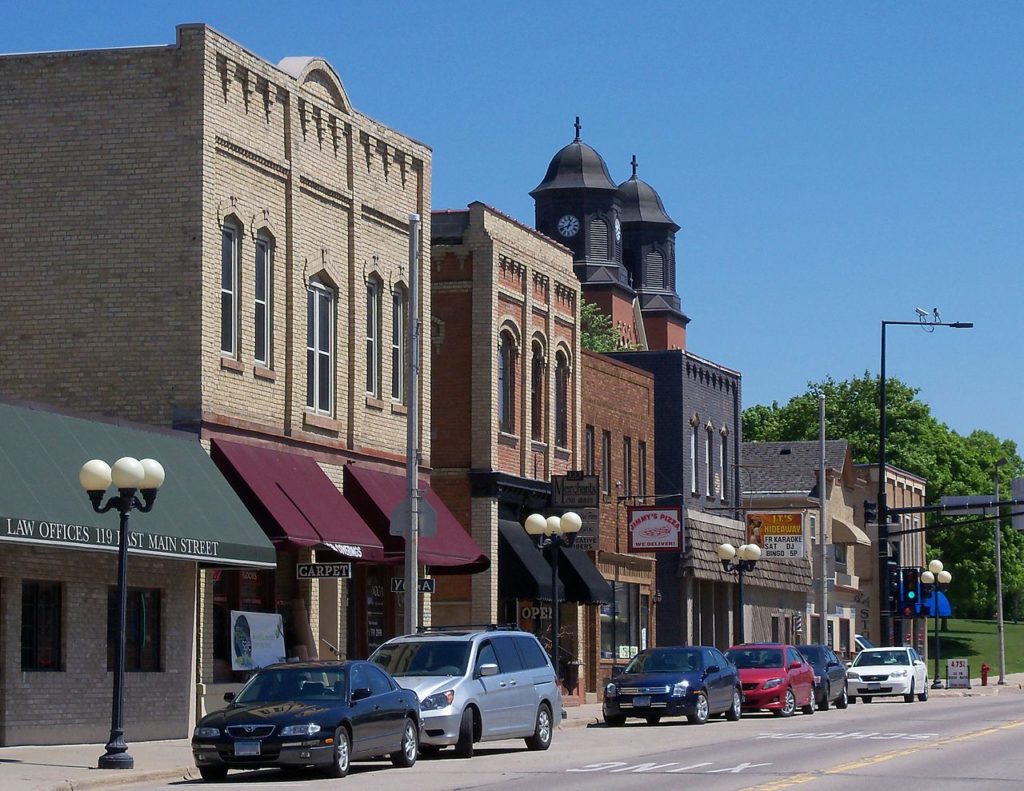
In this part of Minnesota, you can seemingly visit the whole of Europe within a 50 mile radius of New Prague. Communities of varying sizes were named to reflect their immigrant founders’ reverence for home along with the optimism associated with a fresh start: Kilkenny, Veseli, Norseland, Dundas, Heidelberg, Cologne, Hamburg, New Ulm, Warsaw, New Sweden, Elysian, New Trier, New Germany.
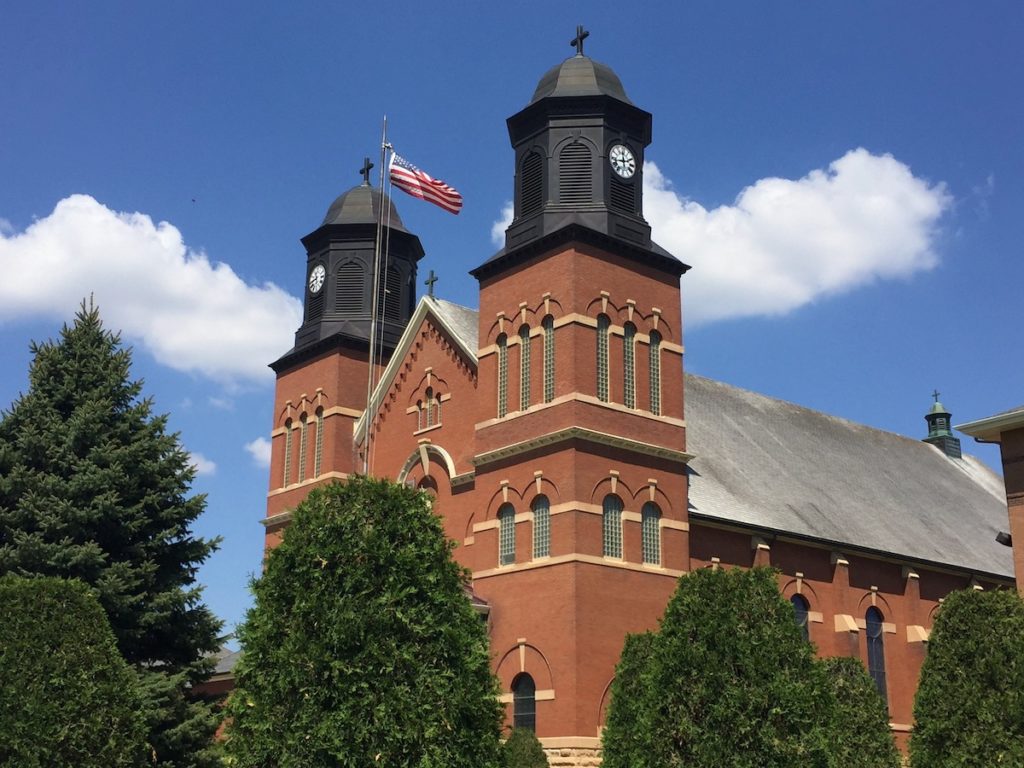
Folks in New Prague meet each other in coffee shops whose owners have names like Angie and Patty, who know their customers by name. The local cafe gears up for the Sunday after-church crowd, and business is done in the shadow of the grain elevator next to the railroad tracks.
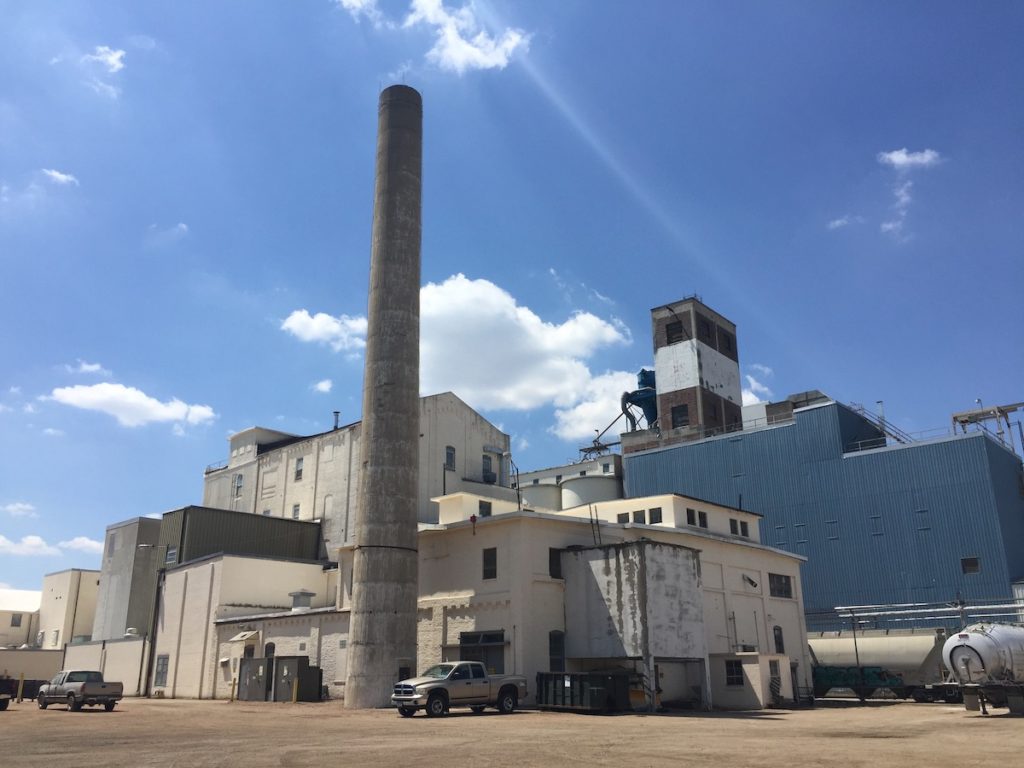
Sometimes coastal elites in America dismiss towns like New Prague as “flyover country,” not worthy of a traveler’s attention. Others who grow up in small communities feel confined and can’t wait to escape out into the “real world.”
Only belatedly might we realize that greener grass is actually grown in the rich, fertile, black dirt here that reliably delivers on its seasonal promise.
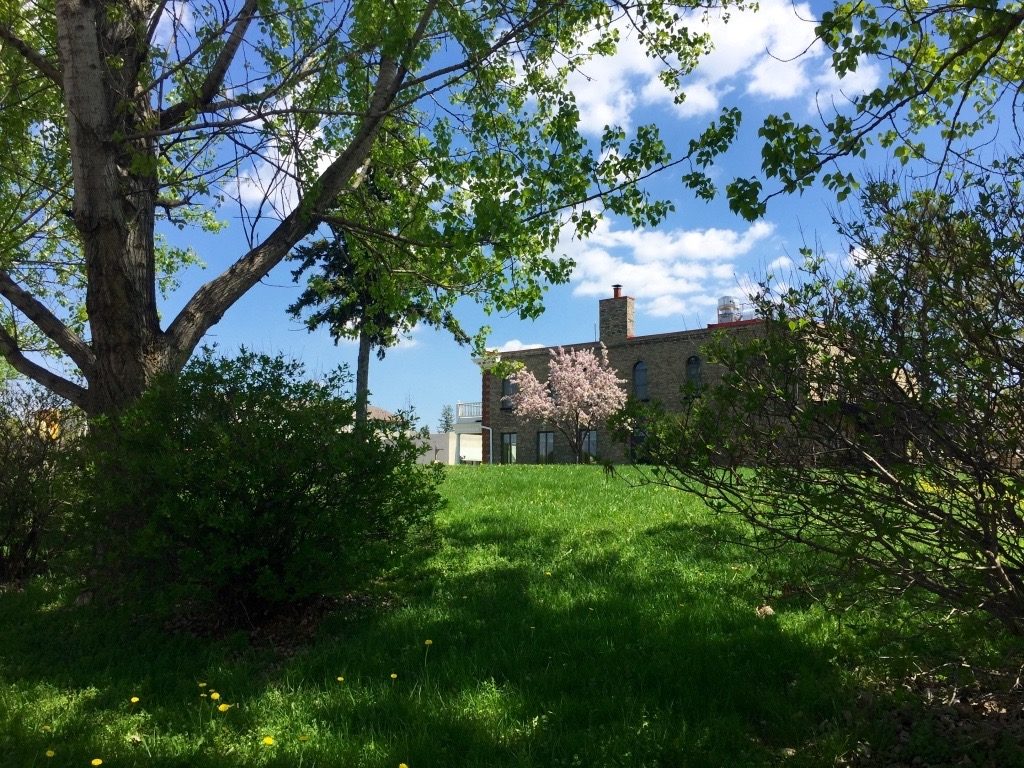
This is the steady sort of grounding – how the phrase originates? – that comes from growing up with your neighbors and going about your business with them for decades. While their forefathers may have traveled thousands of miles to begin again, many current residents of New Prague (pronounced “prayg” here) bear the old names one sees on the original plats. There is plenty to reward and sustain a good life.
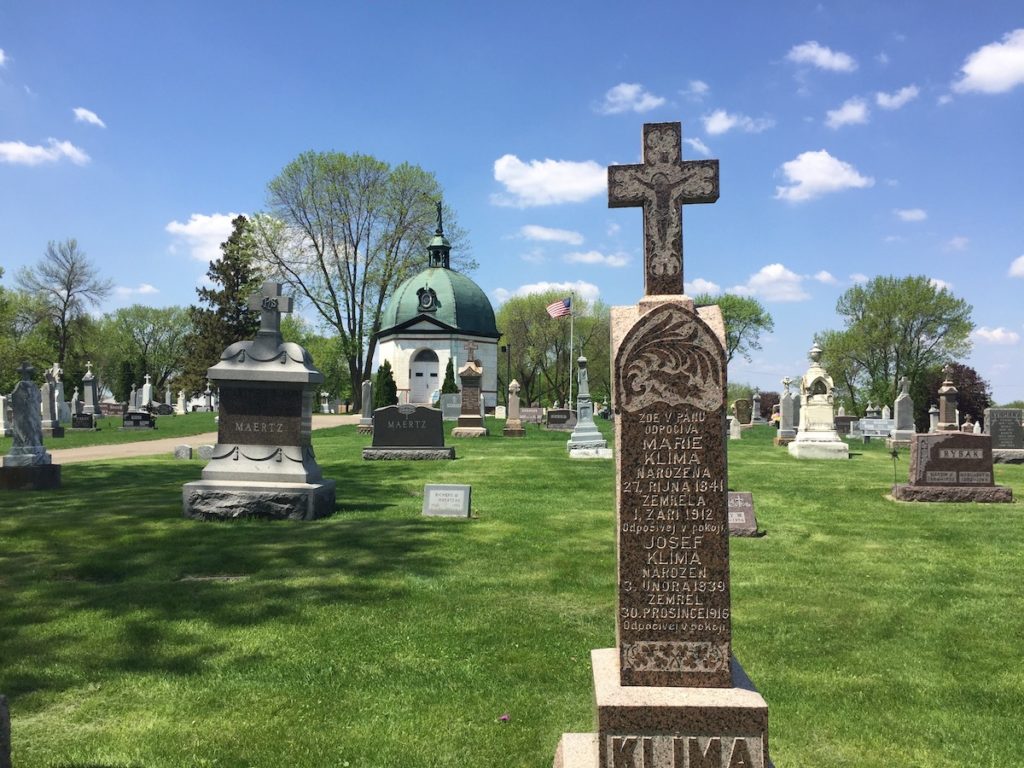
For travelers, there is much to discover in a town like New Prague: cultural legacy, architectural interest, wholesome food and drink, and welcoming places to wander in.
Grab an ice cream cone and amble along the Main Street sidewalk, pull into a parking lot without worrying if you locked the car door, and chat up friendly locals whose hospitality is genuine. Read on for more background and ideas. . .
Bohemian Settlers Spearheaded Old World influences in New Prague Minnesota in the 19th Century
Like many small towns in the Midwest, the Old World influences in New Prague, Minnesota trace back to a specific region in Europe. The USA’s Midwest is relatively young by comparison with other parts of the world: what is now the city of New Prague only saw its first European settler less than 200 years ago.
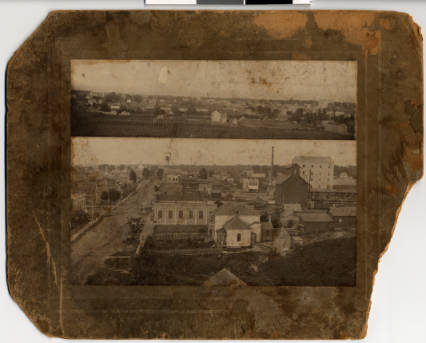
What County is New Prague MN In and What Was It Like Back Then?
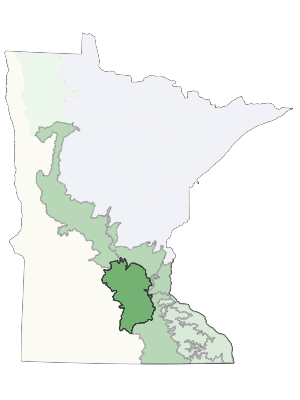
Minnesota Territory lawmakers created Scott and Le Sueur Counties in 1853, when treaties with the Sioux began to allow access to areas west of the Mississippi River.
Ahead of the first Bohemian families to arrive three years later, New Prague founding father, Anton Philipp, bought acreage in Helena Township, Scott County just south of our kids’ farm, in 1856.
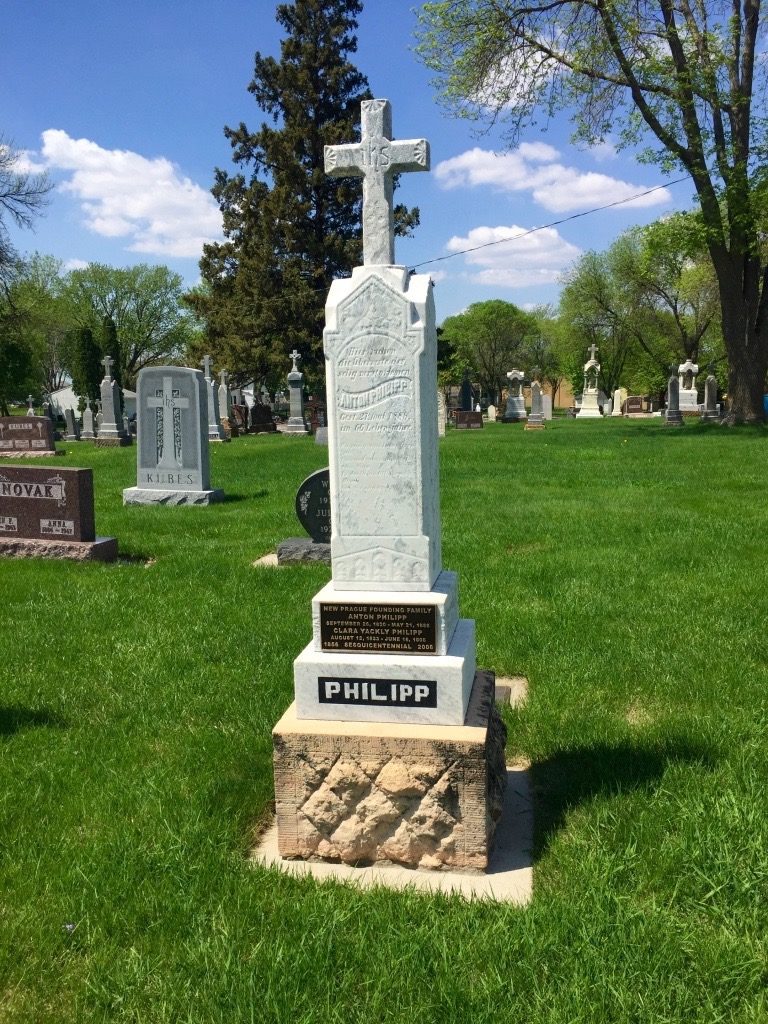
Helena Township in those days was smack dab in the middle of the Big Woods (name taken literally from Grand Bois, dubbed by early French explorers). This was an eco-region dominated by thick, old-growth hardwoods in a 40 mile wide swath grown out of glacier deposits, which stretched diagonally for about 100 miles in Central Minnesota.
Tip: Today, you can see a preserved portion of the Big Woods as they appeared in the 19th century in the nearby Nerstrand Big Woods State Park.
While its 45 mile distance makes New Prague one of the more popular day trips from Minneapolis, in those days the dense Big Woods precluded rapid travel. The trees were so close together that carts pulled by oxen could not pass.
Foot travelers followed waterways branching off from the Minnesota River, such as Sand Creek, on the banks of which Anton Philipp built his first log cabin. Others tied ropes and cut notches in the trees to mark their routes. It took several days to get back up to Shakopee on the Minnesota River, a distance of 22 miles.
The Big Woods also made it nearly impossible to accurately survey county lines. It’s probable early settlers in New Prague didn’t realize their new settlement was growing in both Scott and Le Sueur Counties. Philipp subdivided his property without platting it and began selling to Bohemian arrivals shortly thereafter.
Early History of New Prague
Czech Bohemian immigrants by way of Iowa appear to have shown up in what would become New Prague by accident. Stopping in St. Paul for guidance from the Catholic bishop there, they intended to find land with the help of the Benedictine monks at St. John’s Abbey (incidentally, where Pete attended college at St. John’s University).
Instead, they mistook the bishop’s directions to follow the Mississippi westward and got lost along the Minnesota River.
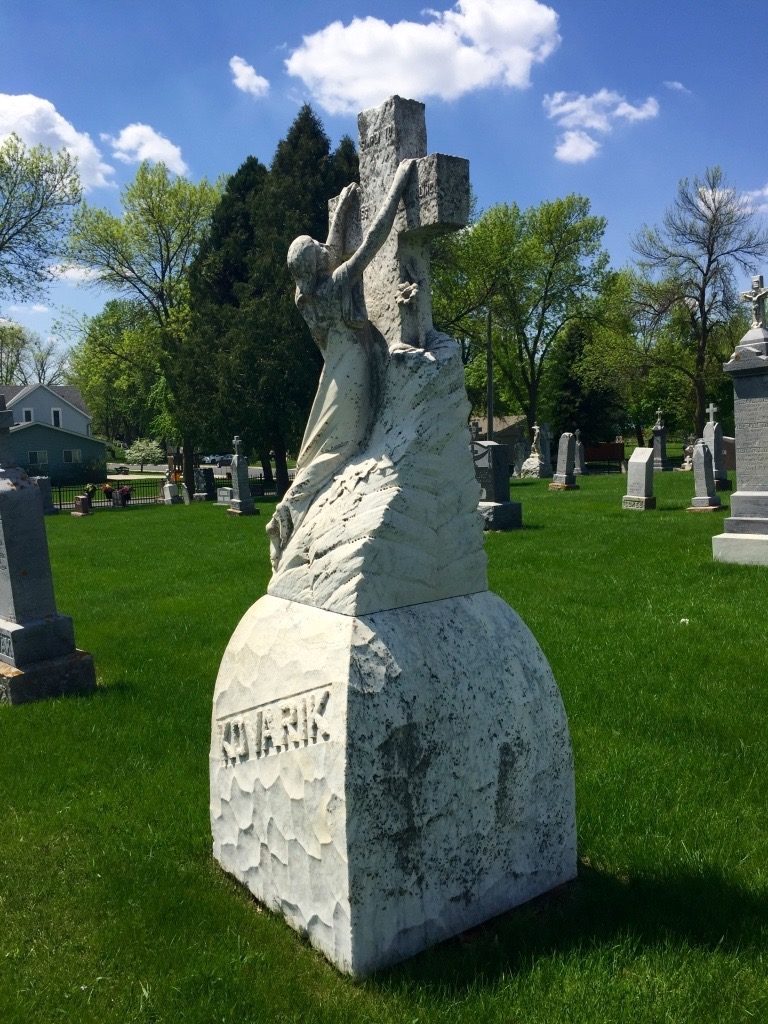

Bohemians by the thousands had begun to flee the semi-feudal system in their European homeland and continued to do so over a period of 40 years from 1850 onward to escape hunger and oppression.
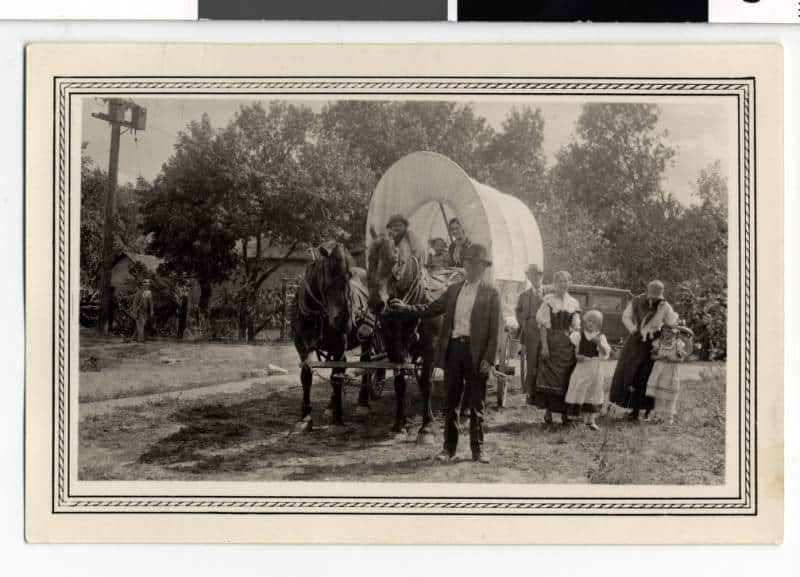
Staking claim, therefore, in the Big Woods must’ve seemed like “sticking it to the man” on a certain level. But the forest was difficult to clear for planting, so subsistence depended upon a combination of hunting, planting and foraging.
A run on valuable wild ginseng found in the forests only lasted for about three years before it was tapped out, and life in the extreme weather was challenging.

European settlers also only belatedly realized the potential of prairie lands, mistakenly believing that the different eco-system represented lack of nutrients.
They soon discovered, however, that it was easy to grow wheat. It became even easier to transport crops to market when railroads arrived in the 1870s, bringing along with them new machinery and milling techniques.

This led to a prosperous period in New Prague beginning in the 1880s and lasting through WWI. Afterwards, industrial modernization led to fewer and larger farms and agribusiness growth.
The New Prague Flouring Mill Company developed into ConAgra and International Multifoods, expanding their headquarters to Minneapolis.
While the recently closed milling and elevator complex still dominates the landscape in New Prague today, in the meantime agriculture branched out to other crops and animal husbandry.
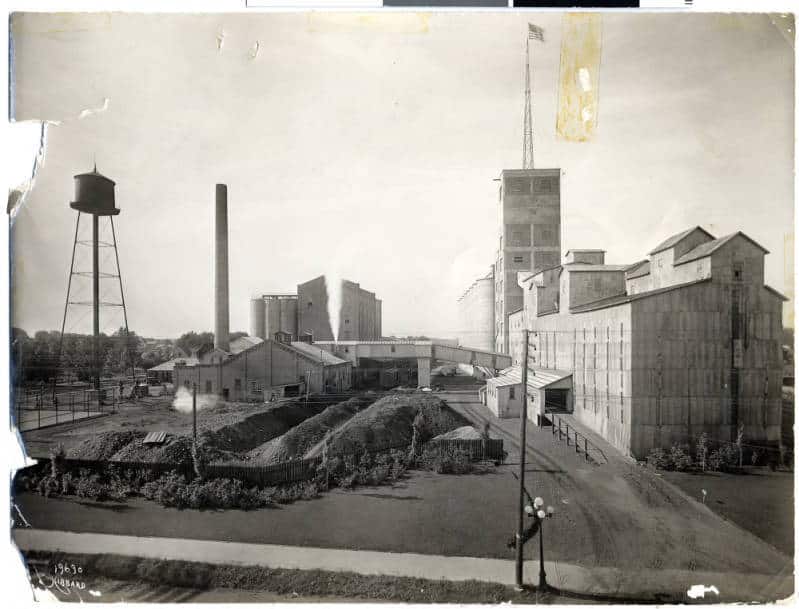
Small Town Midwest Values and Historic Legacy Are On Display in the City of New Prague
The history of New Prague is on display for visitors and residents alike today. The city has a rich architectural legacy reminiscent of its Central European roots, strong religious affiliations, and entrepreneurial spirit.
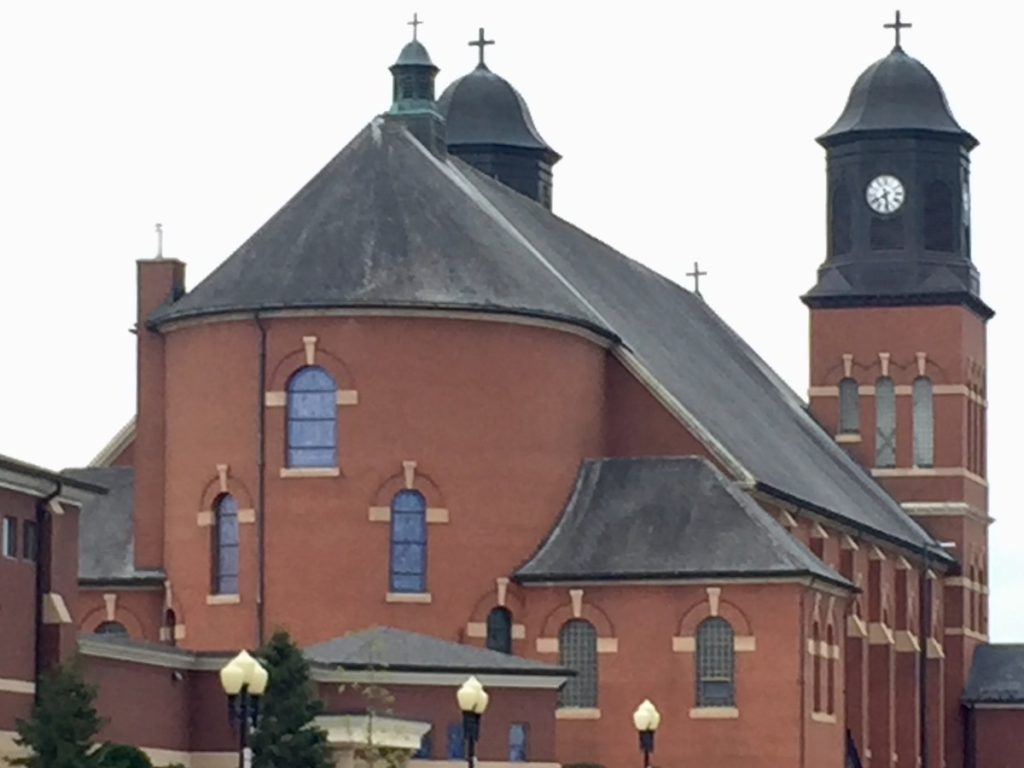
Architecture lovers on day trips from the Twin Cities will delight in the beautiful examples of public, commercial and residential buildings still around today. A healthy combination of original use and re-purposing lends to the historic atmosphere.
Other buildings in town await visionary ideas, which we hoped would come to fruition. A current residential development spurt adds new families and their expectations for amenities and services.
Notable Vintage Architecture in New Prague
Church of St. Wenceslas, Rectory and School Complex – Organized in 1856 with a log building, St. Wenceslas parishioners in the first years of the 20th century were directed by their priest not to bother coming back to church if they didn’t donate to the building fund.
Completed in 1907 using a combination of neoclassical and Romanesque styles, the church’s twin domes flank the entrance to a spacious, light-filled interior. This is adorned with traditional Czech symbology used sparingly and effectively.
Stained glass windows bear Czech inscriptions. Named for Wenceslas I, Duke of Bohemia, the church is listed on on the National Register of Historic Places.

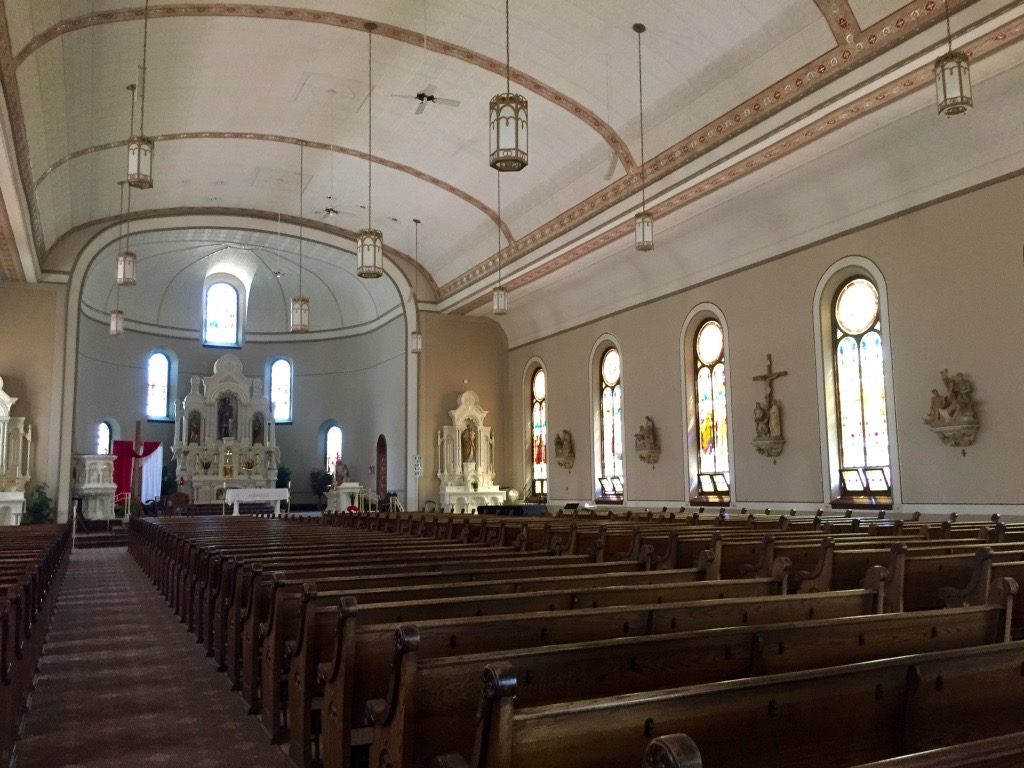
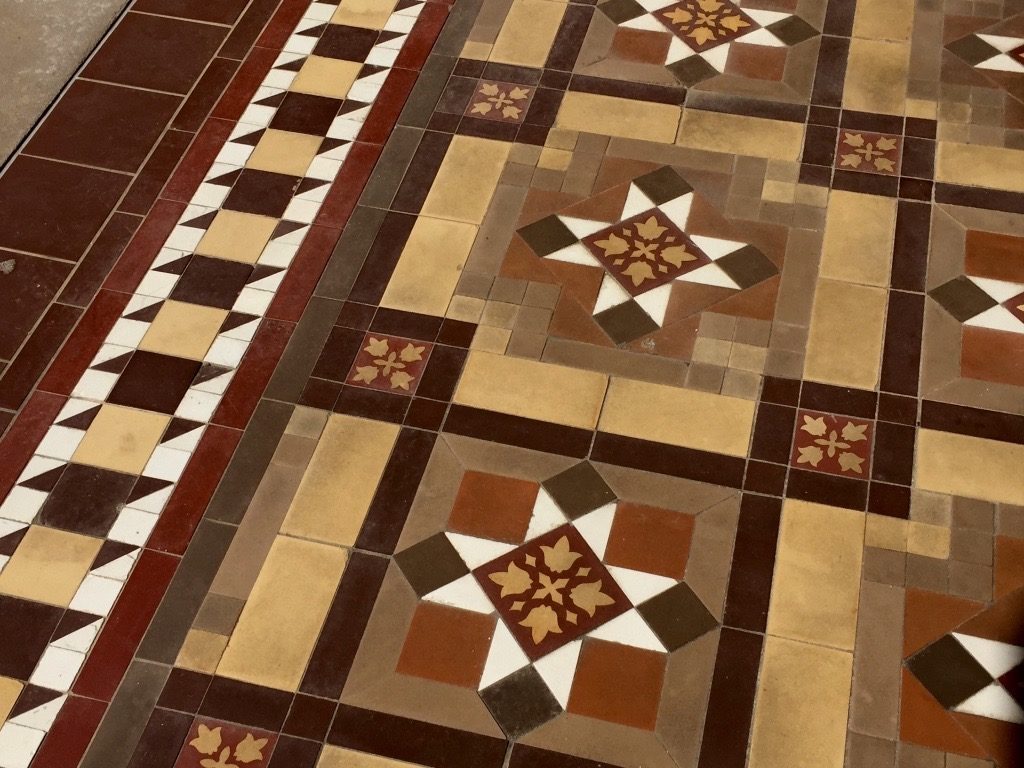
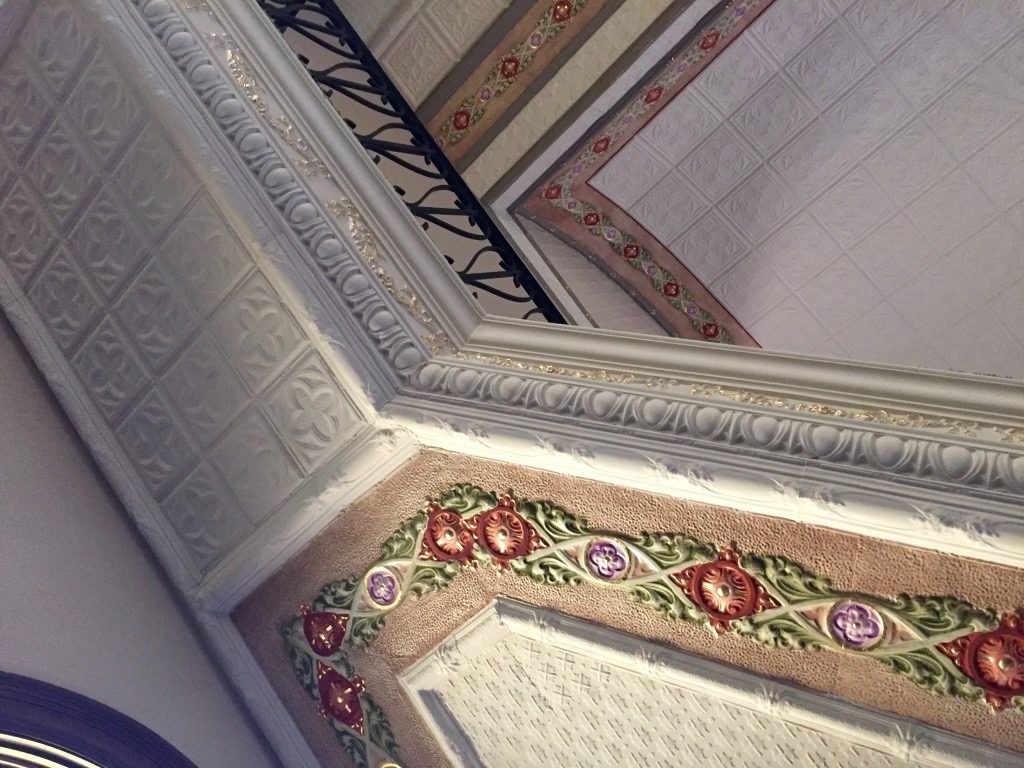
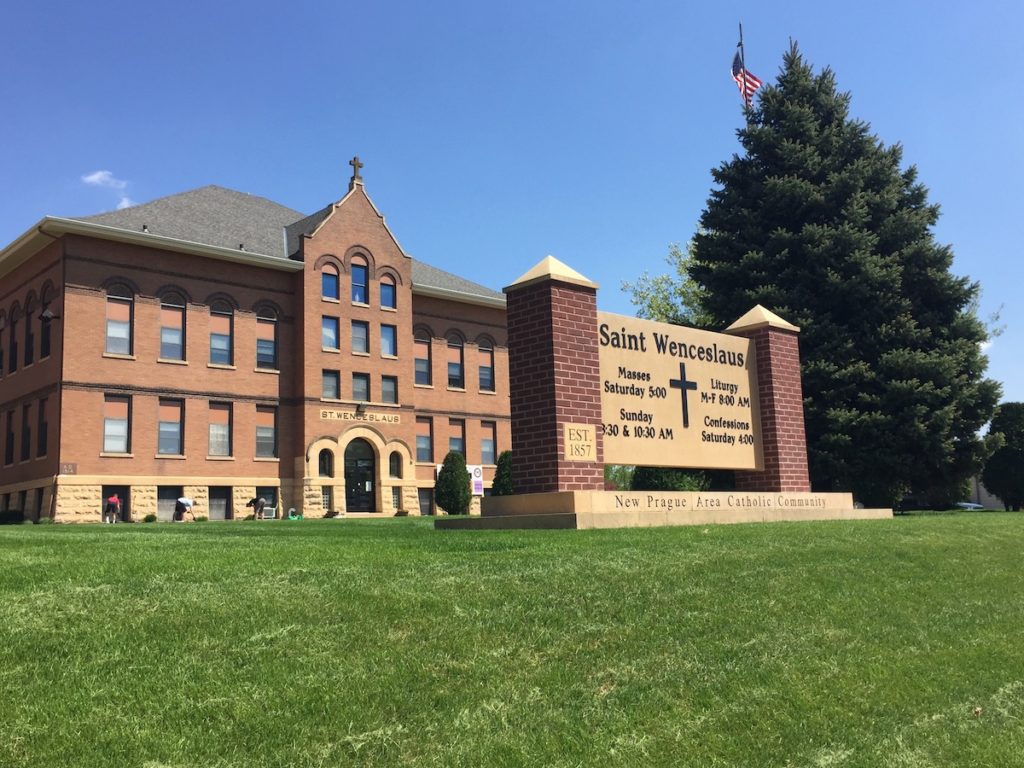
Broz Hotel – Designed by famed Minnesota State Capitol architect Cass Gilbert in the Georgian Revival style and built in 1898 by Wenceslas Broz, currently under renovation and restoration. Listed on the National Register of Historic Places.
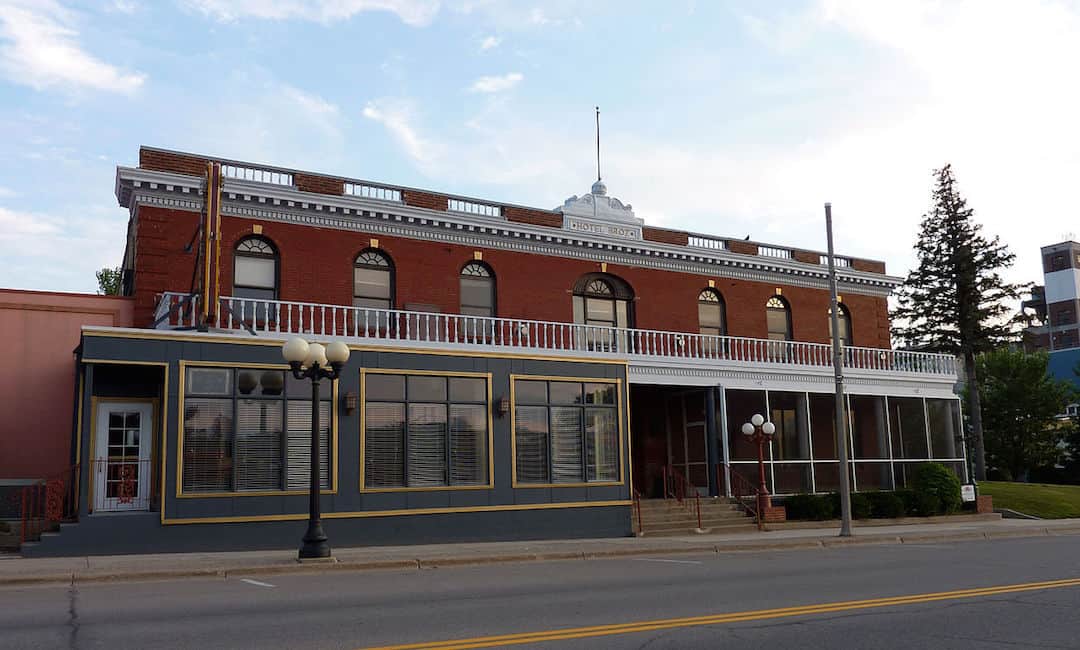
First National Bank of New Prague – Built in 1922 on the Main Street site of a previous building with a distinctive glazed terra cotta facade. Listed on the National Register of Historic Places.
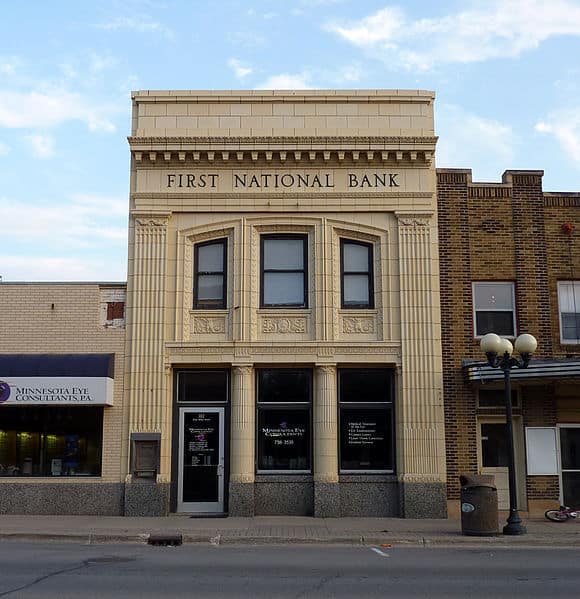
St. Wenceslas Cemetery Chapel – Built in 1899 of marble after the cemetery was established in 1884. Older monuments and remains were moved ahead of the new church’s construction in 1907. The chapel’s copper dome features the angel Gabriel.

The former Klondike Hotel – Built by Joseph Wrabek in the 1890s using distinctive yellow Chaska brick as a boarding house for workers at the mill across the street. Now a private residence.
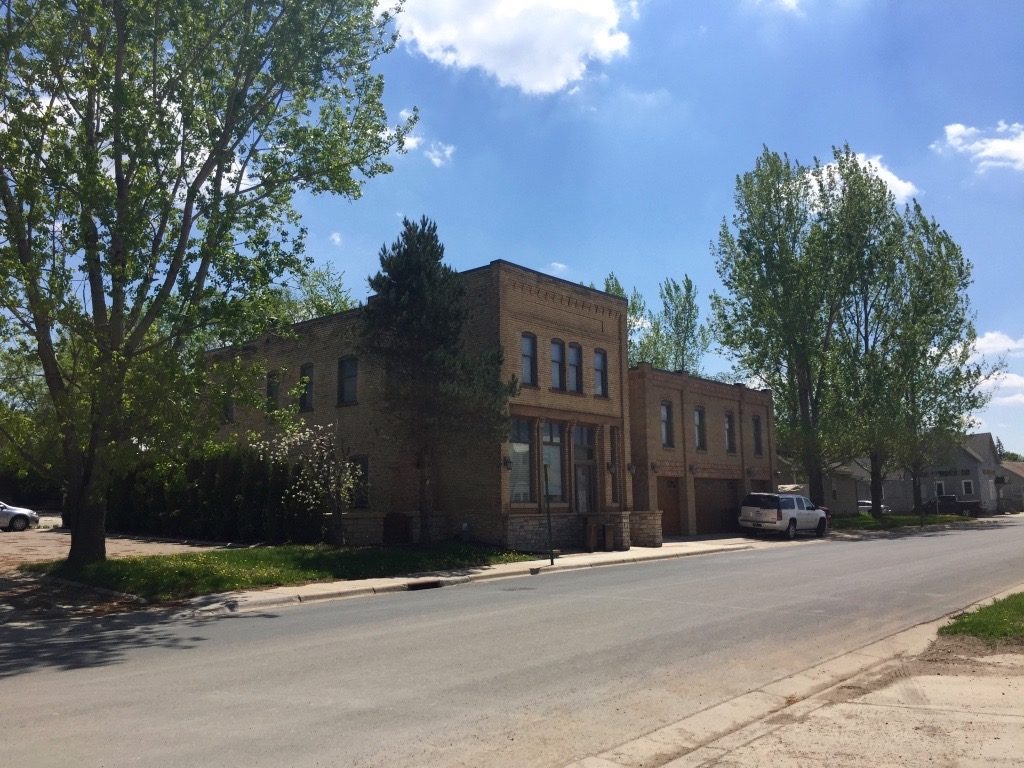
Czech Traditions Alive in New Prague and Environs
Vomacka (Vomachka) – a hearty, cream-based vegetable soup is on the soup of the day menu all over town. Touted as a hangover cure, vomacka means “gravy” in Czech. Those in the know add vinegar at the table to kick it up a notch.
Kolache (Kolacky, pronounced “ko-latch-key”) – a semi-sweet dessert pastry originating in Central Europe, the kolacky is flavored with fruit or jam in the center of a puffy, buttery pastry. Find them in different fruit flavors at Lau’s Czech Bakery.
Czech Slovak Century – 2018 marked 100 years since Czechoslovakia was formed, 50 years since the Prague Spring, and 25 years since the Czech and Slovak Republics’ formation. The Czech Heritage Club meets monthly March through December in New Prague City Hall (for more information, click here).
Dozinky Days Harvest Festival – Held on the 3rd Saturday of September on Main Street, includes an open air market, beer garden, vintage car guise, farm pride parade, and food booths. The Czech Heritage Village set up outside the Tupy Insurance Agency building has booths featuring Czech souvenirs, music and dancers, and resources for those interested in history and genealogy. Click here for more information.
Tip: If pastry and a summer festival is more your thing, check out Kolacky Days in Montgomery (8 miles south of New Prague) in July. Celebrated for more than 80 years, the event includes a torchlight parade, fireworks, traditional Czech dinner, classic cars and vintage tractors, eating contests and the US National Prune Spitting Contest!
Things to Do in New Prague
Besides festivals like Dozinky Days and Kolacky Days, the city of New Prague offers visitors quality products and experiences to try.
Farmhouse Market – Local organic and natural foods in a membership-based unstaffed retail location which uses a keycard entry and self-checkouts. Open to the public with staff for varying 3 hour shifts on Tuesdays, Thursdays and Saturdays. Click here fore reviews and information.
Mainstream Boutique – a contemporary fashion franchise with a hip local esthetic. Click here for more information.
Humble Pie Gifts – Browse in 1700sf of gift collections, clothing and accessories, baby and children’s items, and New Prague souvenirs. Click here for more information.
Enjoy Bohemian Specialties and Small Town Hospitality at New Prague Restaurants
A day trip from Minneapolis is going to require sustenance at some point, and New Prague restaurants will satisfy. A few of our favorites:
Sugar Rose Bakery – this little gem belies its strip mall location by offering a sophisticated array of muffins, bars, cupcakes and cookies, making it a perfect stop for coffee and a little something sweet or savory. Click here to see their Facebook page.
Patty’s Place – A Main Street morning hangout with coffee, pastries, lunch menu, cakes, cupcakes and ice cream. Click here to read TripAdvisor reviews.
Ettlin’s Cafe – a sophisticated take on old fashioned diner food, Ettlin’s is always packed, but worth the wait. Local ingredients and honey from their own bees. Click here to read TripAdvisor reviews.
The Flip Side – a list of New Prague MN restaurants, or any small town for that matter, wouldn’t be complete without a favorite dive bar. We like the Flip Side because it has great food – try the burgers and o-rings! – and a modest, family-style atmosphere.Click here to read TripAdvisor reviews.
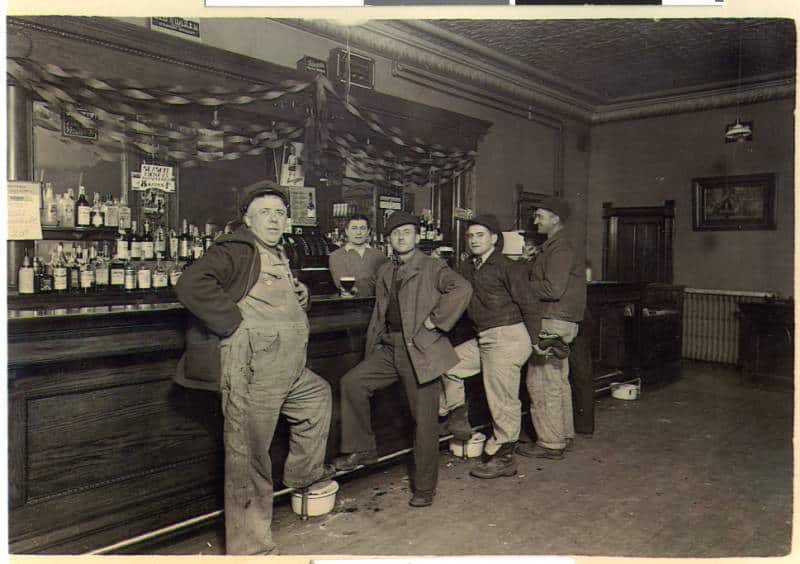
The Fishtale Bar & Grill – bills itself as a a “modern, down home joint” with wholesome food, weekly specials and full bar in a rustic northwoods atmosphere. Click here to read TripAdvisor reviews.
Carbone’s Pizza and Sports Bar – not just pizza but a varied menu of generous proportions includes Italian specialties, sandwiches and burgers, pizza and options for kids. Click here to read TripAdvisor reviews.
Lakeside Supper Club – a more elegant, yet still casual fine dining atmosphere south of town with beautiful sunsets on Lake Pepin. Click here to read TripAdvisor reviews.
Hotels in New Prague MN
Sometimes day trips from the Twin Cities can turn into weekends away. The list of best New Prague MN hotels, unfortunately, is a very short one. If there is one thing we wish New Prague had but doesn’t is more fun places to stay. We’re hoping the planned re-opening of the Hotel Broz adds more choices to the mix.
For now, the only hotel in the city of New Prague proper is the Quality Inn and Suites. Click here to see Trip Advisor reviews. For a list of hotels within comfortable driving distance of New Prague as ranked by Trip Advisor, click here.
We hope this post has given you a glimpse of why we liked living in New Prague so much. While returning to the US was unexpected, our adopted home town here has turned on the charm and we’ve become enamored. Make sure you plan a visit should you be in the area!
Pinnable Images
